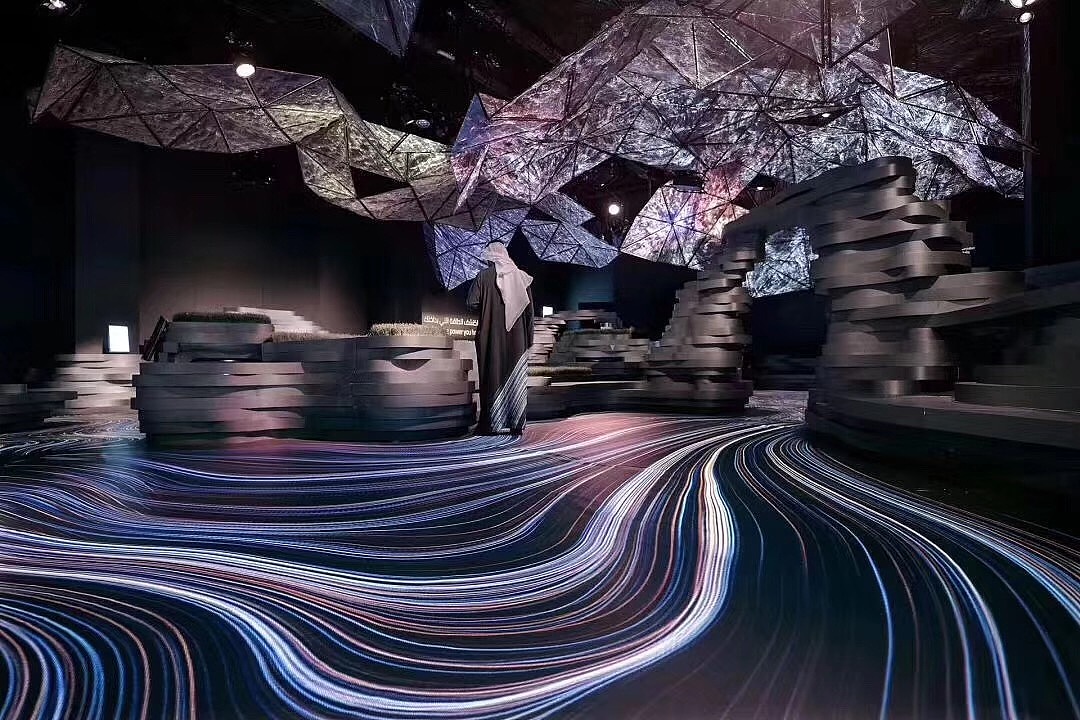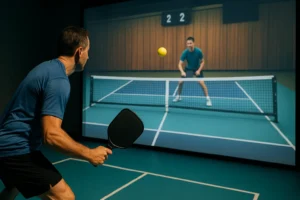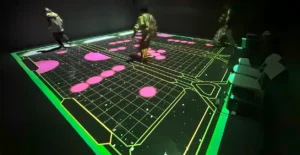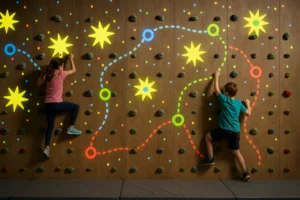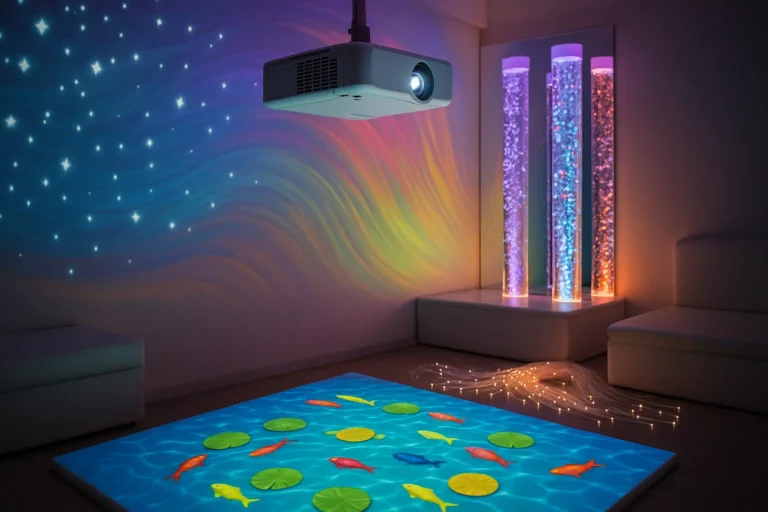In the ever-evolving landscape of digital art Ideas and technology, the concept of an interactive wall projector has emerged as a revolutionary way to display art. These systems not only project stunning visuals but also allow users to interact with them in real time.
Making an Interactive Wall Ideas Projection Show
Creating an interactive wall ideas projection show involves more than just a projector and a blank wall. The first step is to conceptualize the experience you want to deliver. Are you aiming for an immersive art installation, an educational display, or a playful game environment? Your vision will guide the choice of hardware and software needed.
1. Conceptualizing the Show
- Define the purpose: Art, education, entertainment.
- Choose the theme: Abstract, nature, futuristic.
- Plan the interaction: Touch, motion, sound.
2. Selecting the Right Equipment
Investing in the right equipment is crucial. A high-resolution projector, interactive sensors, and a powerful computer system are essential. The choice of projector depends on the size of your wall and the resolution of your content. Interactive sensors can range from touch-sensitive panels to advanced motion detectors.
3. Designing the Content
Content creation is at the heart of your projection show. Use digital art software to create visuals that align with your theme. Tools like Adobe Creative Suite, Blender, or custom software can help you design intricate and captivating artwork. Interactive elements should be seamlessly integrated to ensure a smooth user experience.

How to Make Art Display Walls Interactive
Turning a static art display into an interactive experience requires a blend of technology and creativity. Here are the steps to achieve this transformation:
1. Integrating Touch Sensors
Touch sensors are one of the most straightforward ways to make walls interactive. These sensors can be embedded behind the projection surface, allowing users to interact directly with the displayed content.
- Choose appropriate sensors: Capacitive, resistive.
- Ensure compatibility with your system.
- Calibrate the sensors for accurate touch detection.
2. Utilizing Motion Detectors
Motion detectors add a dynamic layer to your interactive wall. These devices can track movements and gestures, allowing users to control the art display without touching the surface.
- Install motion detectors at strategic locations.
- Configure the detectors to respond to specific gestures.
- Integrate with your interactive software to trigger content changes.
3. Implementing Sound Interactivity
Sound sensors can detect and respond to ambient noise or user-generated sounds. This adds an auditory dimension to the interactivity, making the experience more immersive.
- Select high-quality microphones and sound processors.
- Design sound-responsive elements in your digital art.
- Synchronize sound inputs with visual outputs.
Digital Art Mapping: Creative Painting Walls
Digital art mapping transforms ordinary walls into canvases for vibrant and intricate digital paintings. This technique involves projecting digital art onto surfaces, creating the illusion of painted walls.
1. Preparing the Wall
A smooth and neutral-colored wall provides the best surface for digital art mapping. Ensure the wall is clean and free of imperfections.
- Clean and smooth the surface.
- Paint the wall with a matte finish to reduce glare.
- Test the projection alignment.
2. Designing the Artwork
Digital art mapping allows for highly detailed and dynamic art displays. Use digital art tools to create pieces that can be mapped onto the wall with precision.
- Create high-resolution digital art.
- Design for the specific dimensions of your wall.
- Incorporate interactive elements if desired.
3. Mapping the Art
Use specialized software to map your digital art onto the wall. This process involves aligning the projected image with the physical surface to ensure accuracy.
- Use projection mapping software like MadMapper or Resolume.
- Calibrate the projector to match the wall dimensions.
- Fine-tune the alignment for perfect mapping.
Interactive Wall Ideas: Game Software Development
Integrating game software into your interactive wall projection can turn your display into a playful and engaging experience. Here’s how to develop game software for interactive walls:
1. Choosing the Right Game Engine
Select a game engine that supports interactive projections. Popular choices include Unity and Unreal Engine, which offer robust tools for creating interactive experiences.
- Evaluate the capabilities of different game engines.
- Choose an engine that supports touch and motion interactivity.
- Consider the ease of integration with your hardware.
2. Designing the Game
Game design for interactive walls requires a focus on user engagement and intuitive controls. Develop games that are easy to understand and fun to play.
- Create a storyboard for your game.
- Design simple and engaging gameplay mechanics.
- Test the game with real users to gather feedback.
3. Implementing Interactivity
Incorporate interactive elements into your game software. This can include touch controls, motion detection, and sound inputs.
- Program touch-sensitive areas within the game.
- Use motion detection to control game elements.
- Add sound-responsive features for an immersive experience.
Practical Tips for a Successful Interactive Wall Project
Creating a successful interactive wall project requires attention to detail and careful planning. Here are some practical tips to ensure your project runs smoothly:
1. Collaborate with Experts
Working with professionals in digital art, game development, and interactive technologies can enhance the quality of your project. Seek out experts in these fields to bring your vision to life.
- Hire a digital artist to create stunning visuals.
- Collaborate with game developers for interactive elements.
- Consult with hardware specialists for seamless integration.
2. Focus on User Experience
The success of your interactive wall depends on the user experience. Design your project with the end user in mind, ensuring it is intuitive and enjoyable.
- Conduct user testing during the development phase.
- Gather feedback and make necessary adjustments.
- Ensure the interface is user-friendly and accessible.
3. Plan for Maintenance
Interactive wall projects require ongoing maintenance to keep the hardware and software running smoothly. Plan for regular updates and troubleshooting.
- Schedule routine maintenance checks.
- Keep your software updated with the latest patches.
- Train staff to handle basic troubleshooting.
To create an interactive wall projection show, you will need a high-resolution projector, interactive sensors (such as touch or motion detectors), a powerful computer system, and digital art software.
You can make digital art displays interactive by integrating touch sensors, motion detectors, and sound sensors. These technologies allow users to interact with the projected content in various ways.
Popular software for digital art mapping includes MadMapper, Resolume, and TouchDesigner. These tools offer robust features for mapping digital art onto physical surfaces with precision.

